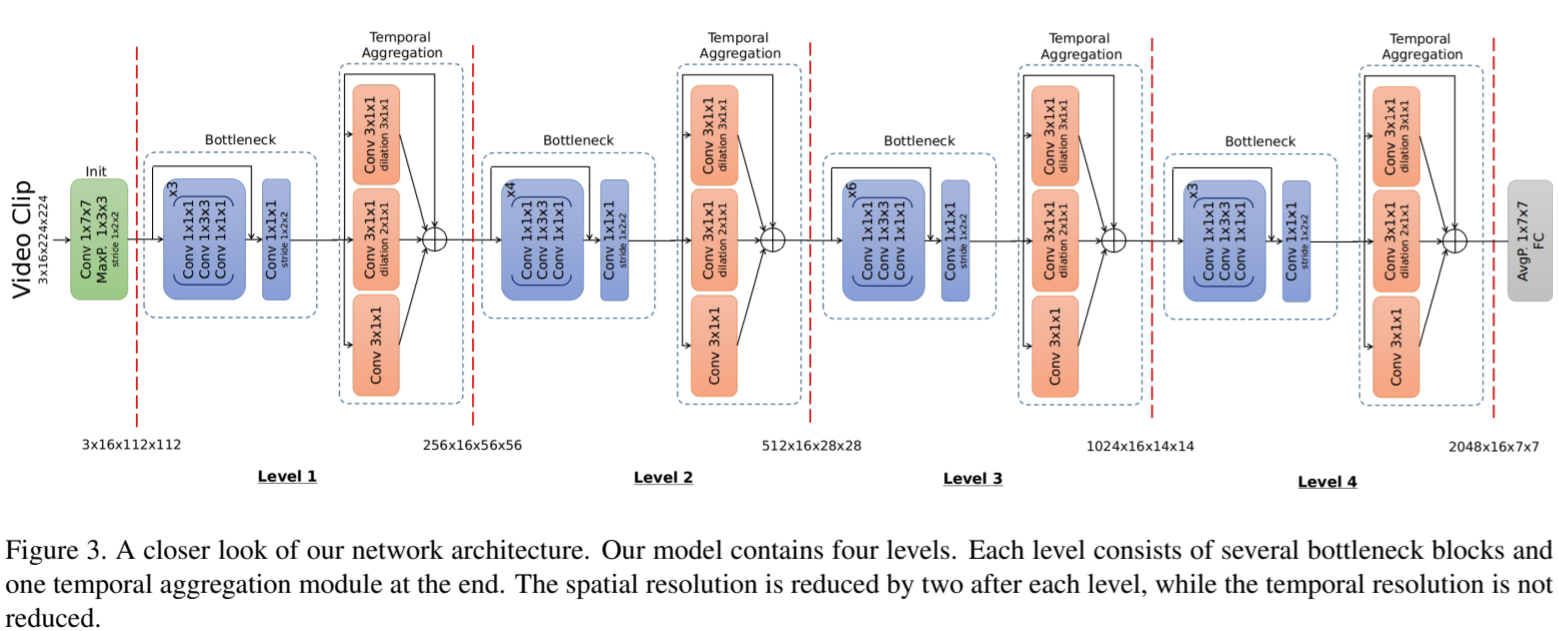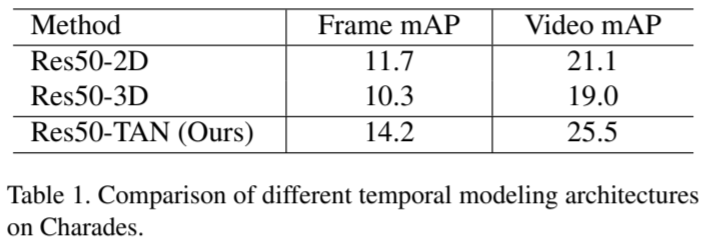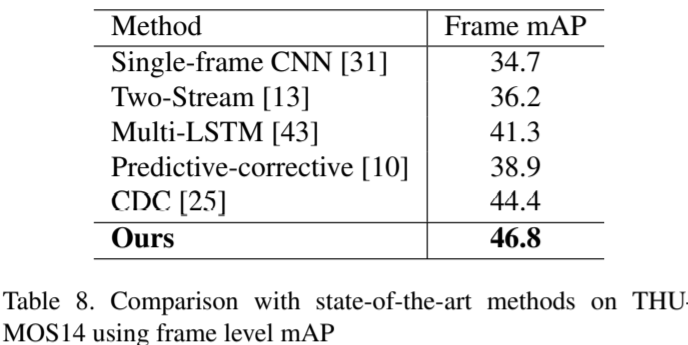Paper Reading @ 23/50
-- original : https://arxiv.org/abs/1812.06203
Formatted Citation:
@misc{dai2018tan,
title={TAN: Temporal Aggregation Network for Dense Multi-label Action Recognition},
author={Xiyang Dai and Bharat Singh and Joe Yue-Hei Ng and Larry S. Davis},
year={2018},
eprint={1812.06203},
archivePrefix={arXiv},
primaryClass={cs.CV}
}
Abstract
Temporal Aggregation Network TAN decompose 3D convolutions into spatial and temporal aggregation blocks.
Reduce complexity : Only apply temporal aggregation blocks once after each spatial down-sampling layer in the network.
Dilated convolutions at different resolutions of the network helps in aggregating multi-scale spatial-temporal information.
TAN model is well suited for dense multi-label action recognition.
Difficulties:
- In a video, multiple frames aggregated together represent a semantic label which caused more computation compared to image recognition.
- Actions can span multiple temporal and spatial scales in videos.
Related Work
- Action recognition
- Two-stream network comprising two parallel
CNNs, one trained onRGBimages and another trained on stacked optical flow fields. C3Doperate on a sequence of image and perform3Dconvolution (\(3 \times 3 \times 3\)).
- Two-stream network comprising two parallel
- Multi-label prediction
- Temporal action localization
- Making dense predictions
- Predict temporal boundaries
Model
- Proposed Temporal Aggregation Module
- A temporal aggregation module combines multiple convolutions with different dilation factors (in the temporal domain) and stacks them across the entire network.
- Temporal convolution is a simple
1Ddilated convolution - Add a residual identity connection from previous layers

- Spatial information
- The bottleneck structure from residual networks.
- A bottleneck block: \(1\times1 \to 3\times3 \to 1 \times 1\). 3 convolution layers.
- Full Model
- Spatial and temporal blocks stacking
- The final architecture consists of four levels of bottleneck blocks and temporal aggregation blocks.
- One temporal aggregation block follows after multiple bottleneck blocks
- The weights of bottleneck blocks can be initialized using pre-trained ImageNet models.
- Spatial resolution is reduced : 1. initial convolution and pooling layers; 2. max pooling after every level

Experiment








